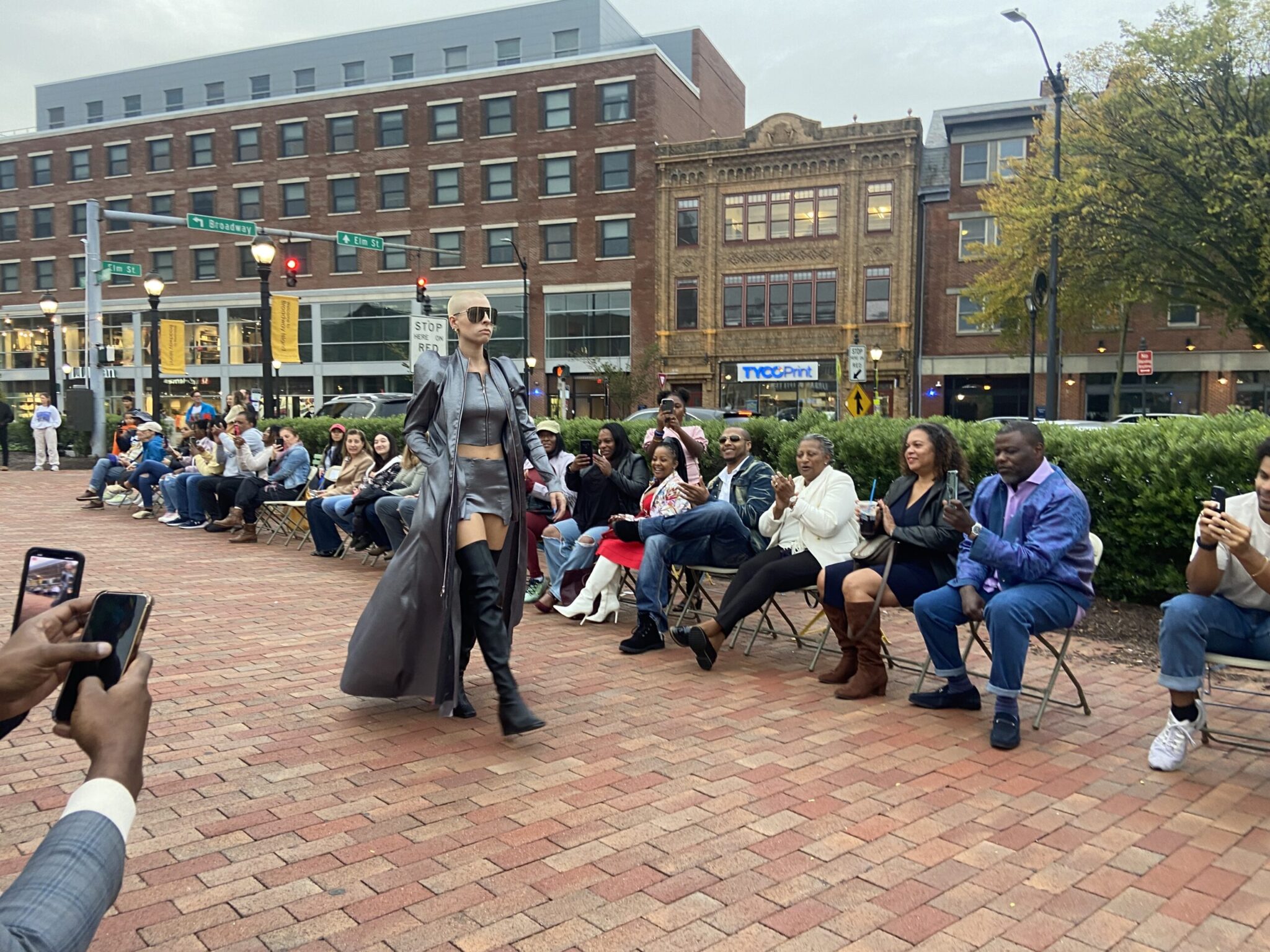
Contributing Photographer, Josie Reich
A designer styling models for a fashion show is, at its core, a presenter, just as anyone at Yale who shares a deck of slides during class. The only difference is that in a fashion show, the models wearing the designer’s pieces do most of the presenting. There is no speaker or script.
Last Saturday, I attended the Neville Wisdom’s Fashion Show on Broadway. The biggest question I was left with was to what extent can a fashion show accurately represent a designer’s ideas and intentions without any explicit explanation?
Fashion is a visual art, and there may be no complete explanation to a show’s meaning or intention that can be communicated verbally. But how is it different from paintings in a museum that are, alternatively, provided with small descriptions?
After the show, I heard a lot of people say that they thought it was great and that they really liked all the unique designs.
“I thought the clothes were very innovative,” said Yeji Kim ’25, a volunteer at the event who made sure the set up and overall show went smoothly. “There was an outfit with a purple jacket and pants that I thought was very innovative, like with its patterns and zippers.”
I completely agree with Yeji. I enjoyed the show because the styles of clothing demonstrated a fresh, unique concept, and there was a great deal of anticipation for each model that walked out with a new outfit. But these aspects were the most I got out of the entire show. If anyone were to ask me what I have learned about the designers from sitting through this fashion show, I probably would not be able to answer.
After the show, I went to ask Dwayne Moore, one of the designers, about the theme of his collection. “There’s no theme,” he responded. “I thought I was too vague but then I was like, ‘Let me relax.’”
Looking back, his words were well reflected through his pieces on the runway. His collection, under the name Duss Wayne, displayed little emphasis on accessorization and consisted of pieces in mostly dark, neutral colors.
Moore also seemed to have a unique take on what he considered as “neutral.” When asked what he considers to be the most versatile type of shoes, he pointed to the shoes he was wearing and replied, “Chicago Jordan 1. I think red is a neutral color.”
This was certainly the first time I’ve heard anyone associate the color red with the word “neutral,” but the idea was represented in his collection on the runway. The hints of dark red, maroon and purple in his pieces complemented the outfits overall and carefully presented Moore’s unique style. I slowly realized that in Moore’s application, the fact that red didn’t necessarily stand out was enough to show that it might actually serve as a neutral color.
The collections of Dwayne Moore and Neville Wisdom were both displayed on the runway, but no clear distinction was made to indicate what item belonged to which designer. To Wisdom, who was in charge of running the fashion show, and Moore, I asked, “Do you prefer buttons or zippers?” Wisdom seemed indifferent but pointed to Moore, saying that he would have a different answer.
“Definitely zippers for sure,” Moore said. “I don’t even know if I have a reason. It may be just complete aesthetic or function, even.” He pointed out that his pieces did, in fact, have more zippers than buttons. From this point on, I was able to realize that the leather jacket with a silver zipper, the cropped sweater with a silver zipper and silver vest with a silver zipper were probably his works. After being able to distinguish between the pieces, I was finally able to get a better understanding of each designer’s personal style and preferences.
It was only after my conversation with the designers that I realized that there was greater meaning behind the pieces displayed. I believe this is indicative of the fact that fashion shows lack the context that may offer greater value and insight to the audience. Of course, all art is different and this may not apply to all fashion shows, or be the case for everyone, especially those who might go to a show just for the sake of seeing the clothes or watching the models walk.
After Neville Wisdom’s show, I have come to understand that getting the full experience of a fashion show requires more direct conversations between the designer and viewer. It may be argued that indirect communication is the purpose of visual art, but if the objective is to understand the thought processes of the designers and the deeper meaning behind each fashion piece, would a fashion show – the way they are currently run — really do the best job?
KRISTEN KIM is a sophomore in Branford College. She can be reached at kristen.kim.kyk4@yale.edu.







